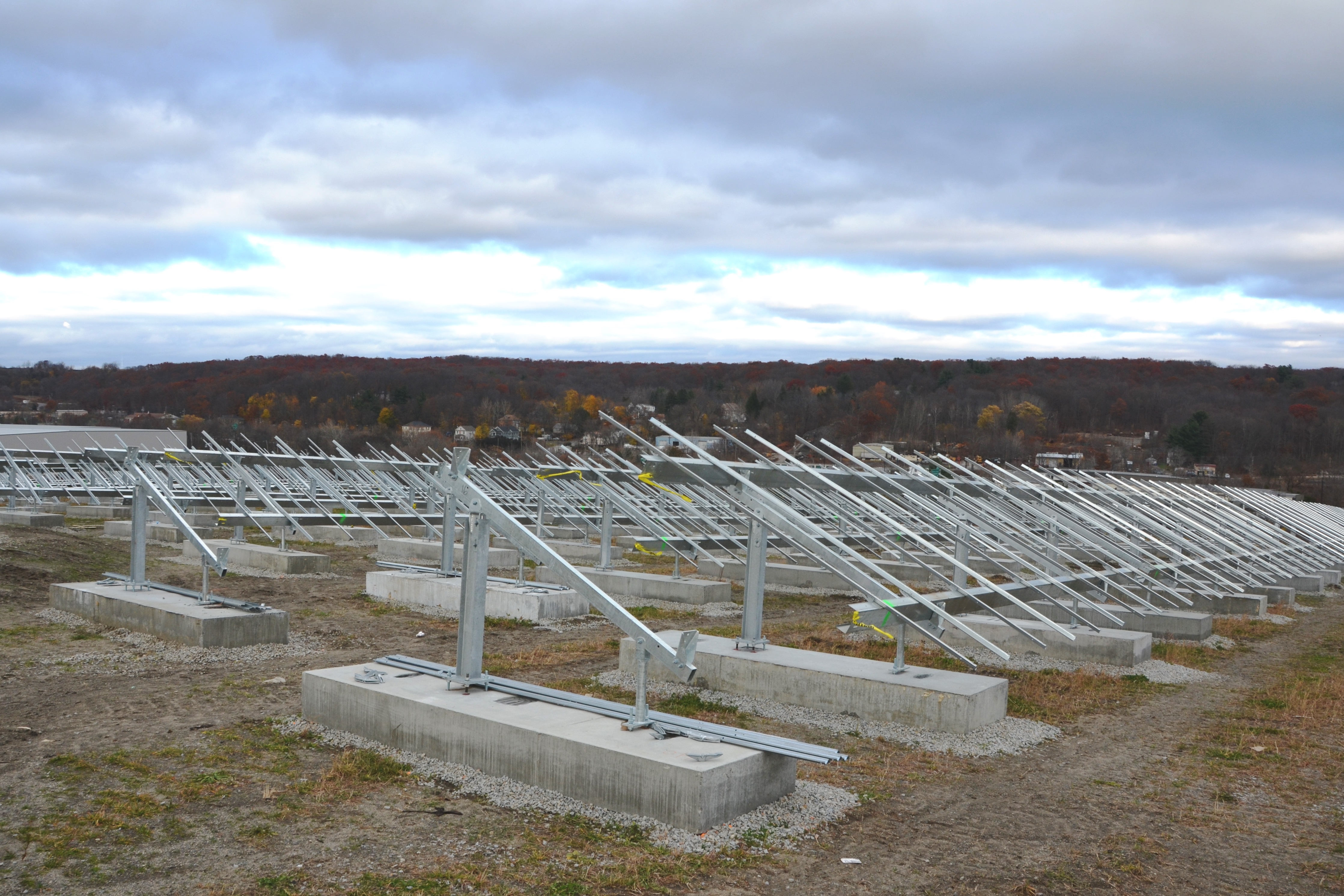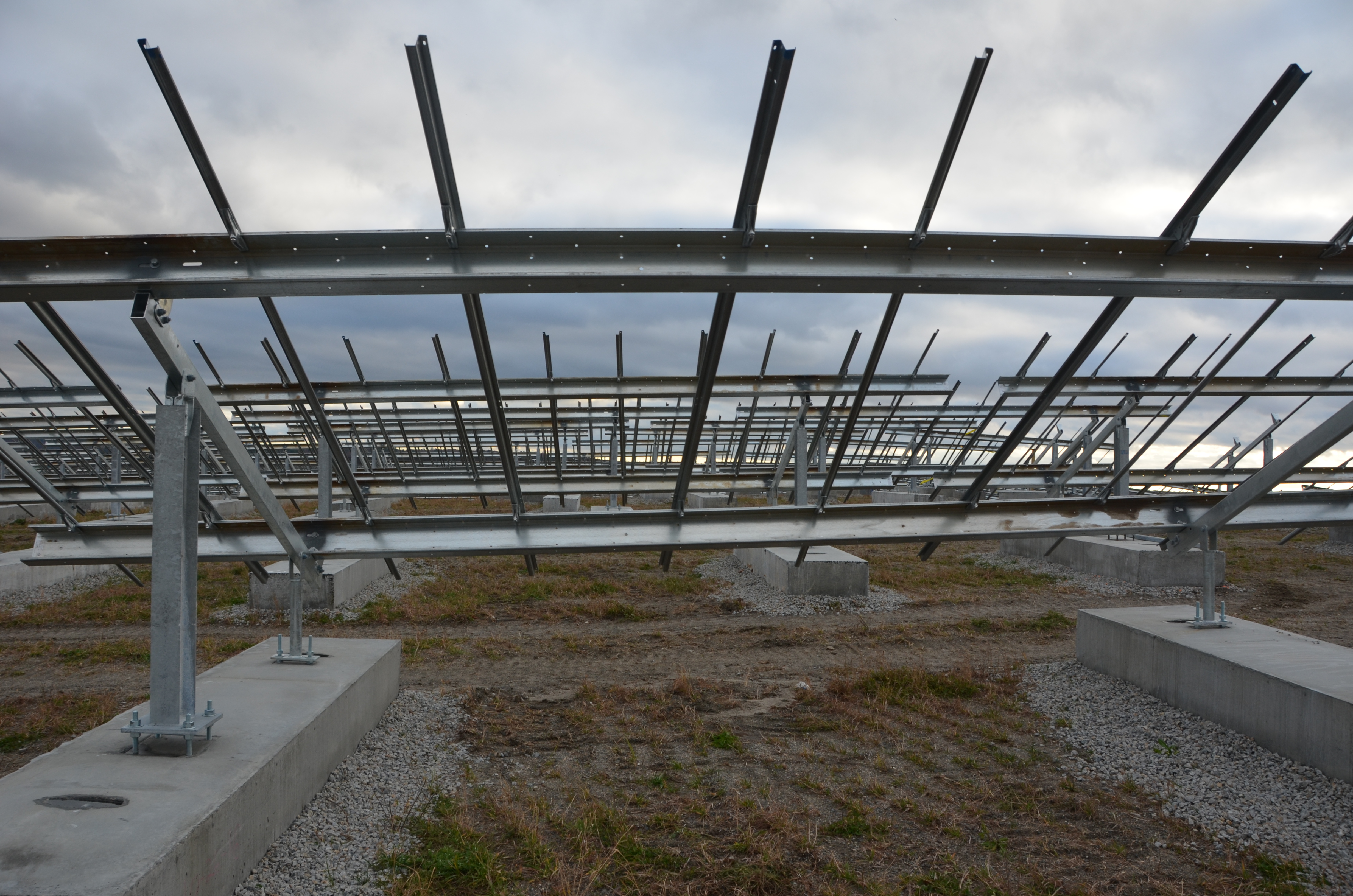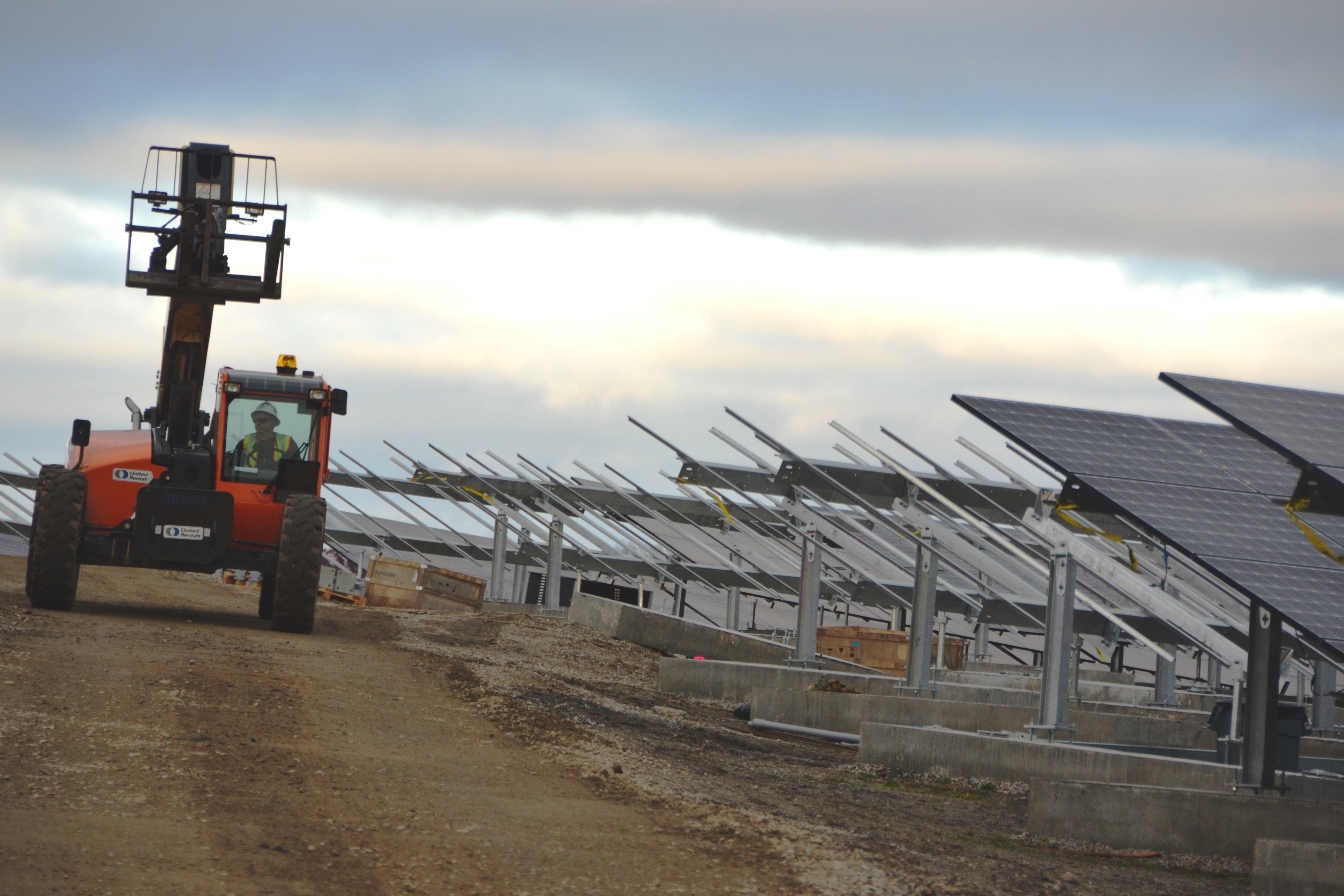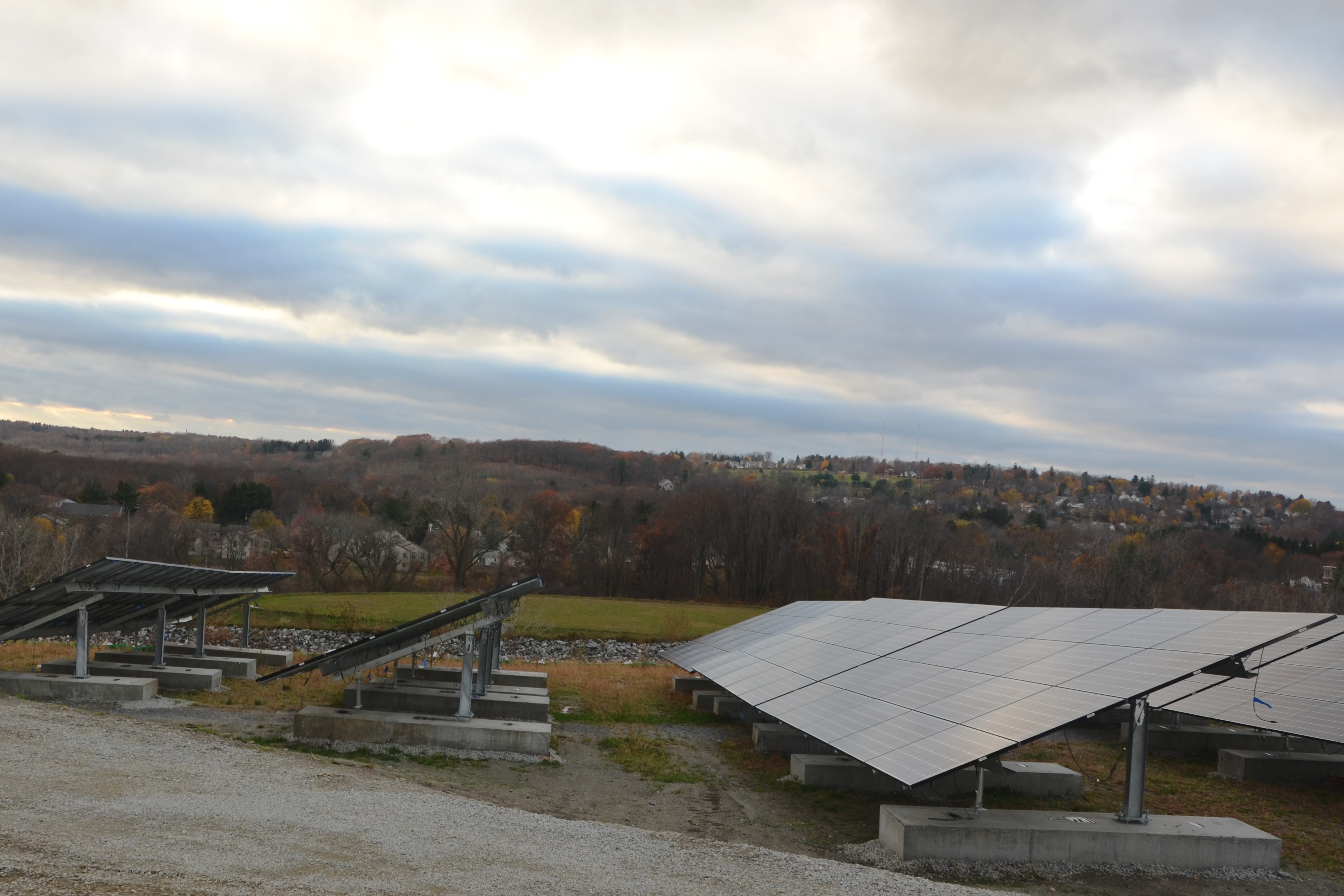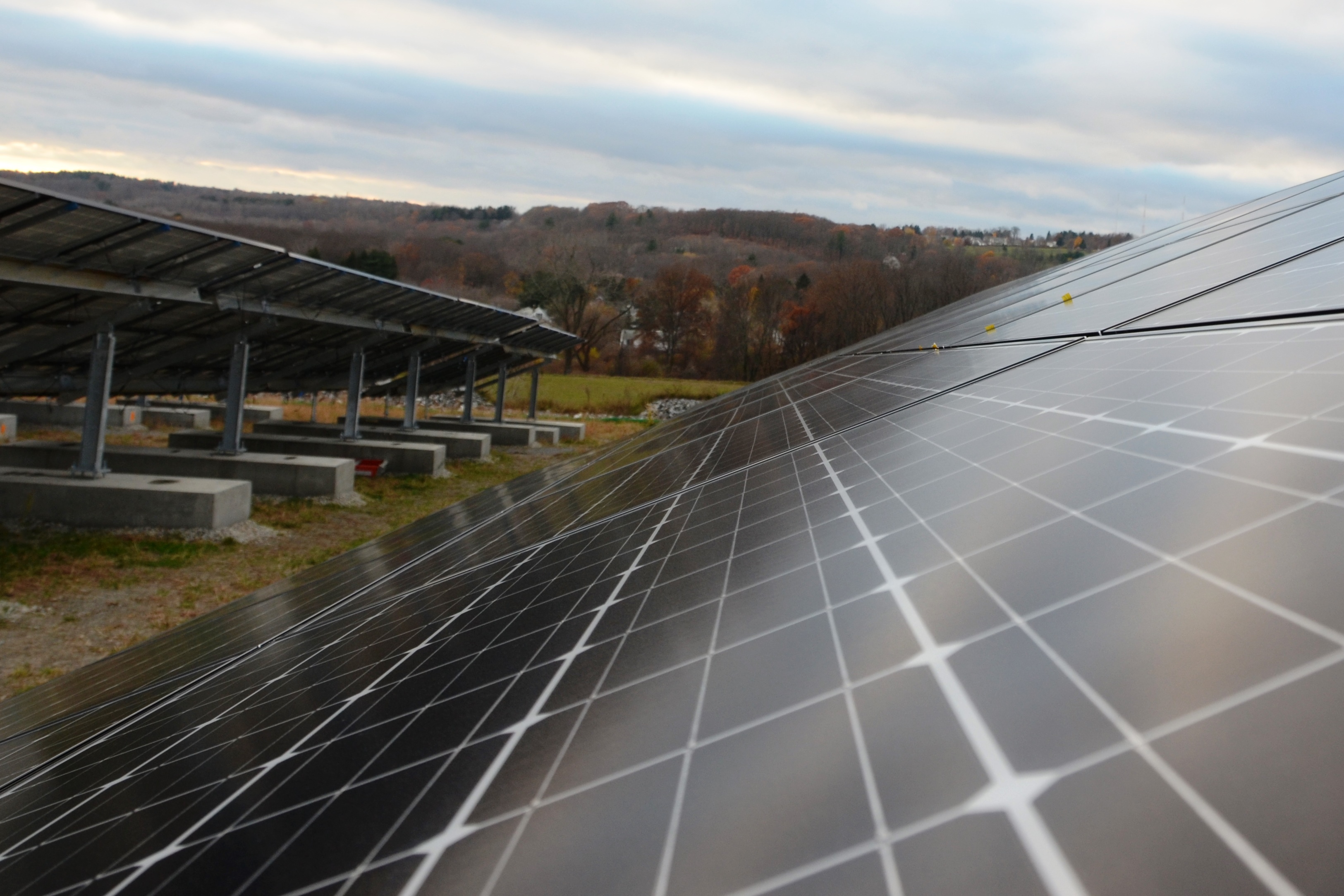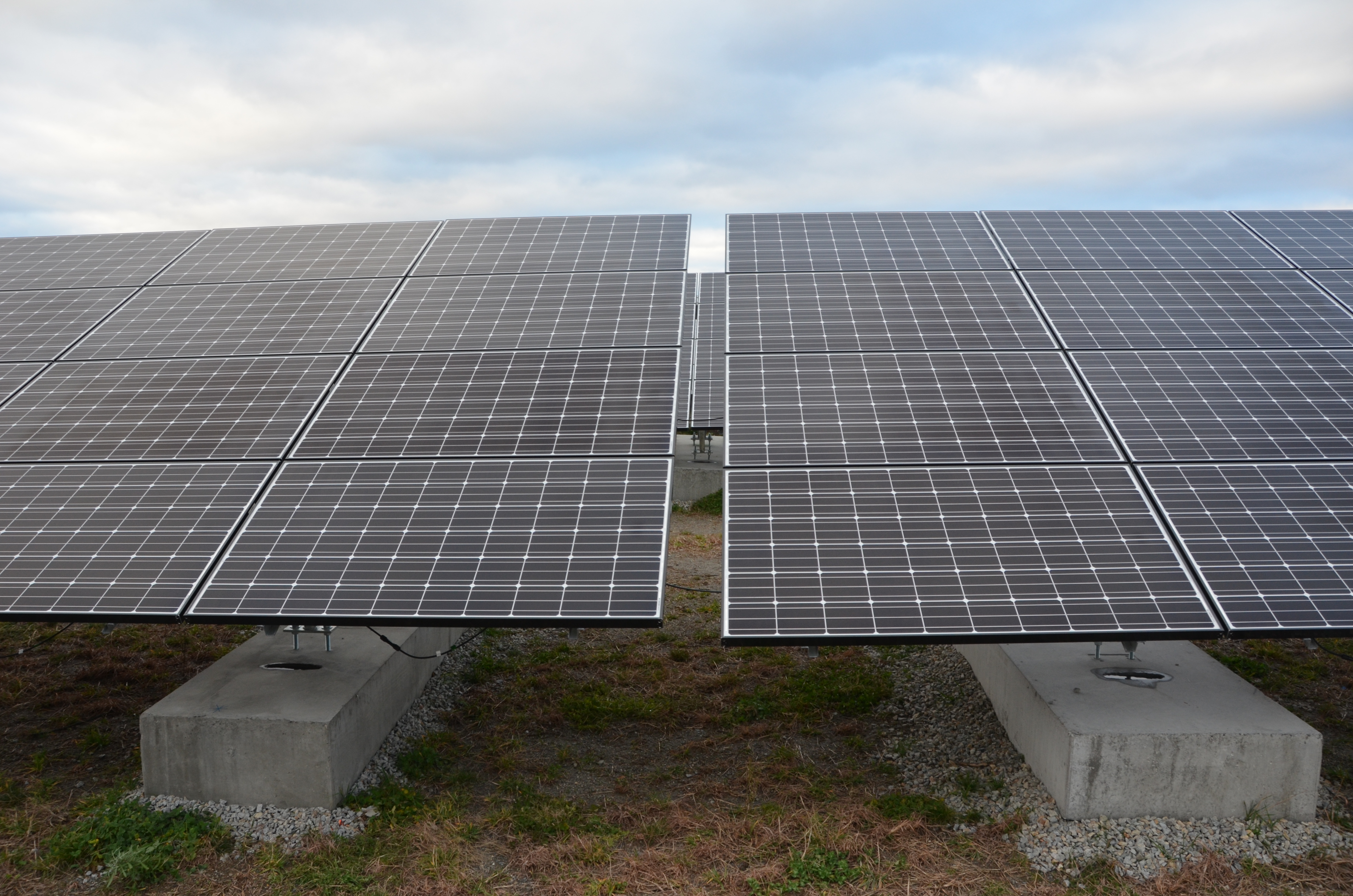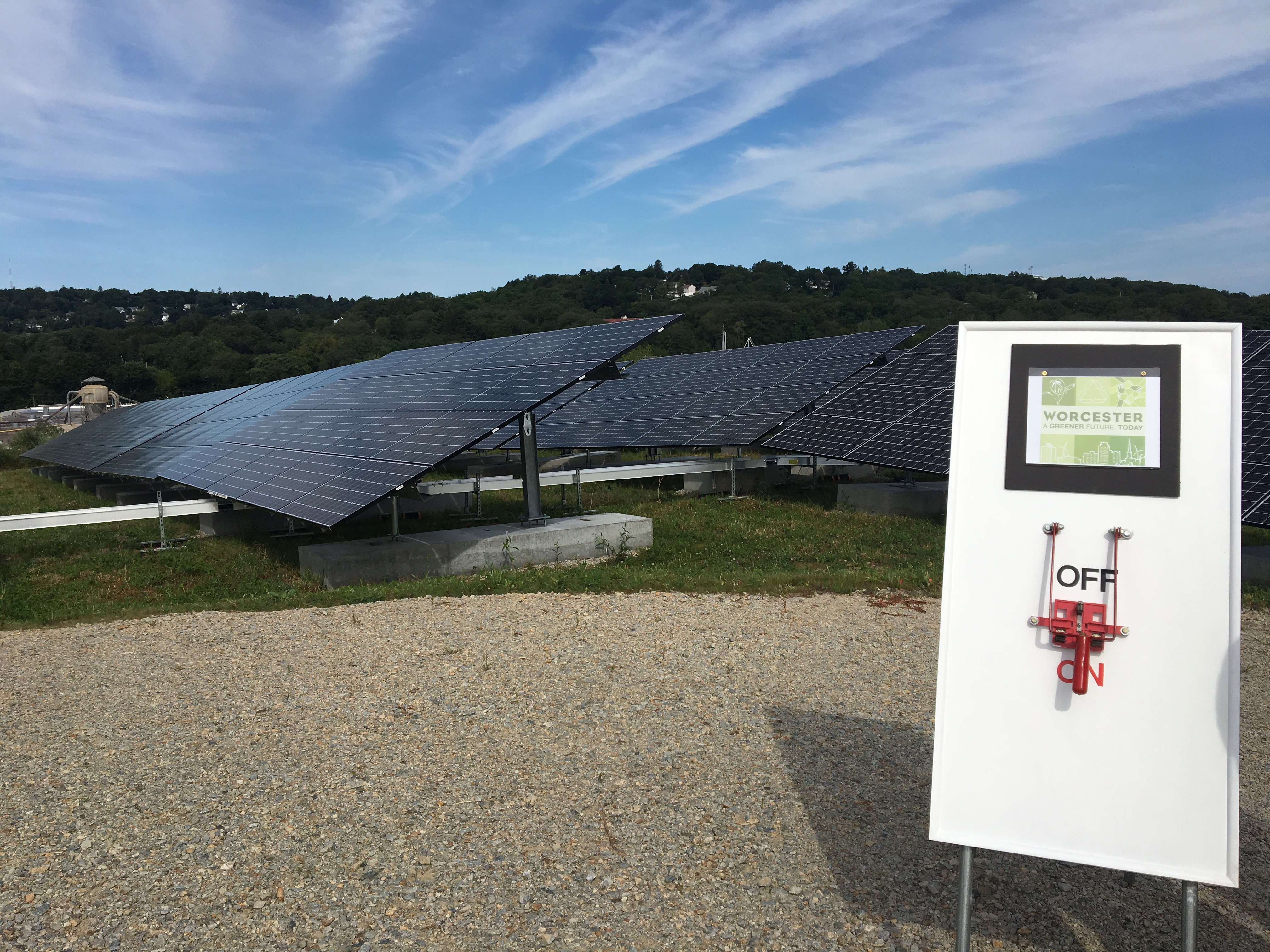
Particularly noteworthy due to its size is a large-scale solar installation at the former (capped) Greenwood Street Landfill.
The 8.1 MW-DC solar array, covering the entire top plateau area of the former landfill (about 26 acres), is the largest municipal solar array in New England as of 2017, producing electricity equivalent of powering 1,340 homes for a year*!
This project is both an appropriate reuse of a large municipal property and will be profitable, with an anticipated 6-year payback on the investment.
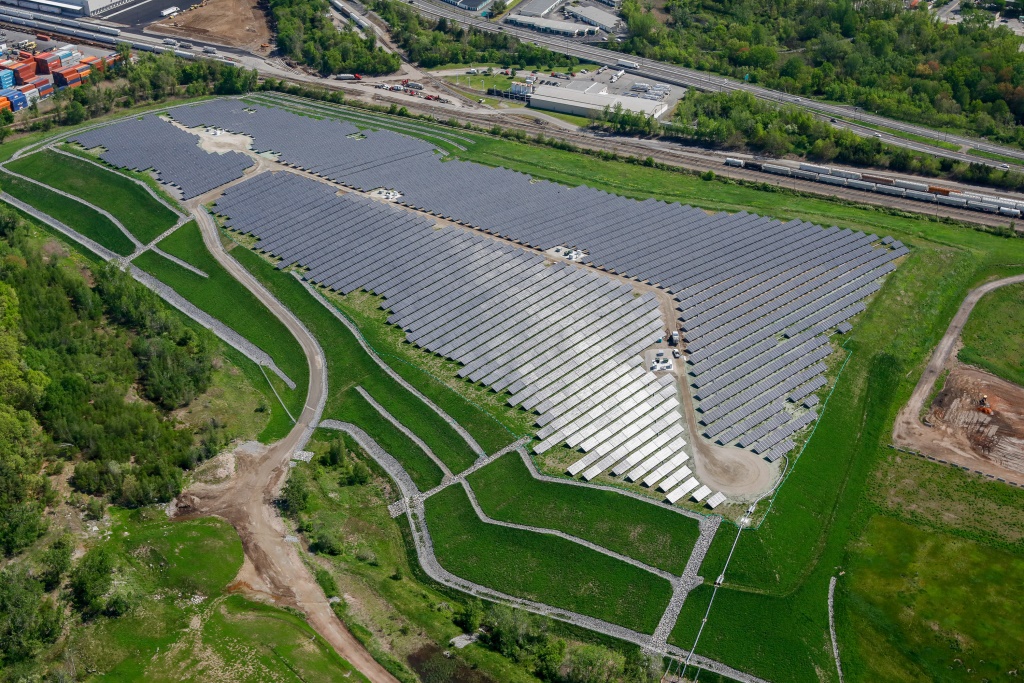
Finances: The solar array is municipally-owned which allows the City to take advantage of selling the Solar Renewable Energy Credits (SRECs) and selling electricity at the valuable net-metering rates. The project was enabled by the Energy Savings Performance Contract. The total project cost is ~$27 million with the payback of about 6 years, in part due to a much higher value of SRECs in the beginning of the term. Using conservative estimates, the City will recoup ~$52 million over the 20 years of the project, and ~$17 million more during the subsequent 10 years, since the array’s life expectancy is 30+ years.
Interesting Facts:
- The Landfill covers 52 acres of a 100-acre City-owned site and was operated as a sanitary landfill by the Worcester Department of Public Works from April 1973 until June of 1985.
- The landfill capping, repairs and modifications were completed by 2014, setting the stage for the solar farm on half of the landfill footprint (26 acres).
 Because the solar farm would displace the grass field that has established over time on top of the capped landfill and appeared to attract Grasshopper Sparrows (Ammodramus savannarum), a state-protected threatened species, as part of an agreement between the City and the Massachusetts Division of Fisheries & Wildlife, Worcester provided funds to be used for the purposes of acquisition, restoration and/or management of habitat, and/or conservation research for the benefit of the bird populations in Massachusetts.
Because the solar farm would displace the grass field that has established over time on top of the capped landfill and appeared to attract Grasshopper Sparrows (Ammodramus savannarum), a state-protected threatened species, as part of an agreement between the City and the Massachusetts Division of Fisheries & Wildlife, Worcester provided funds to be used for the purposes of acquisition, restoration and/or management of habitat, and/or conservation research for the benefit of the bird populations in Massachusetts.- There are 1,430 racks holding up 20 solar panels each – for a total of 28,600 solar panels!
- The racks with panels are ballasted with concrete blocks to avoid penetration of the landfill cap.
- Solar panels’ tilt angle - 25°; azimuth - 180° (i.e. due south).
- Solar panels are also referred to as "Monocrystalline Solar Modules"
- Project Manager and Engineer is Borrego Solar Systems Inc.
- All contractors are part of local unions – electricians, engineers, heavy machine operators, and more - with majority coming primarily from Central and Eastern Massachusetts.
- Learn more by clicking on the solar panels’ specification sheet to the right.
*Assuming ~ 9,890,000 kWh for the first year of electricity production and 7,380 kWh/year of residential electricity consumption in Massachusetts.


